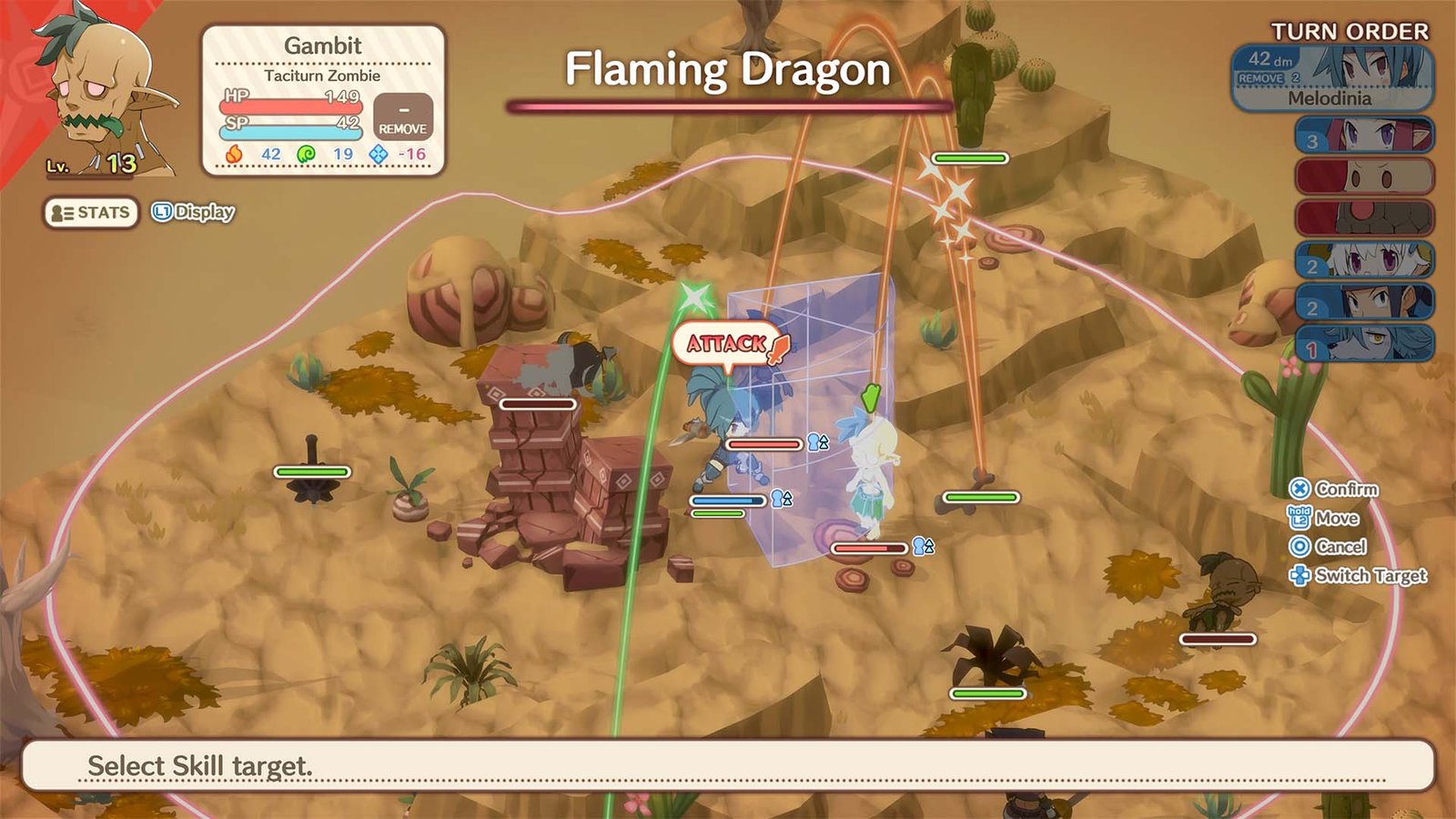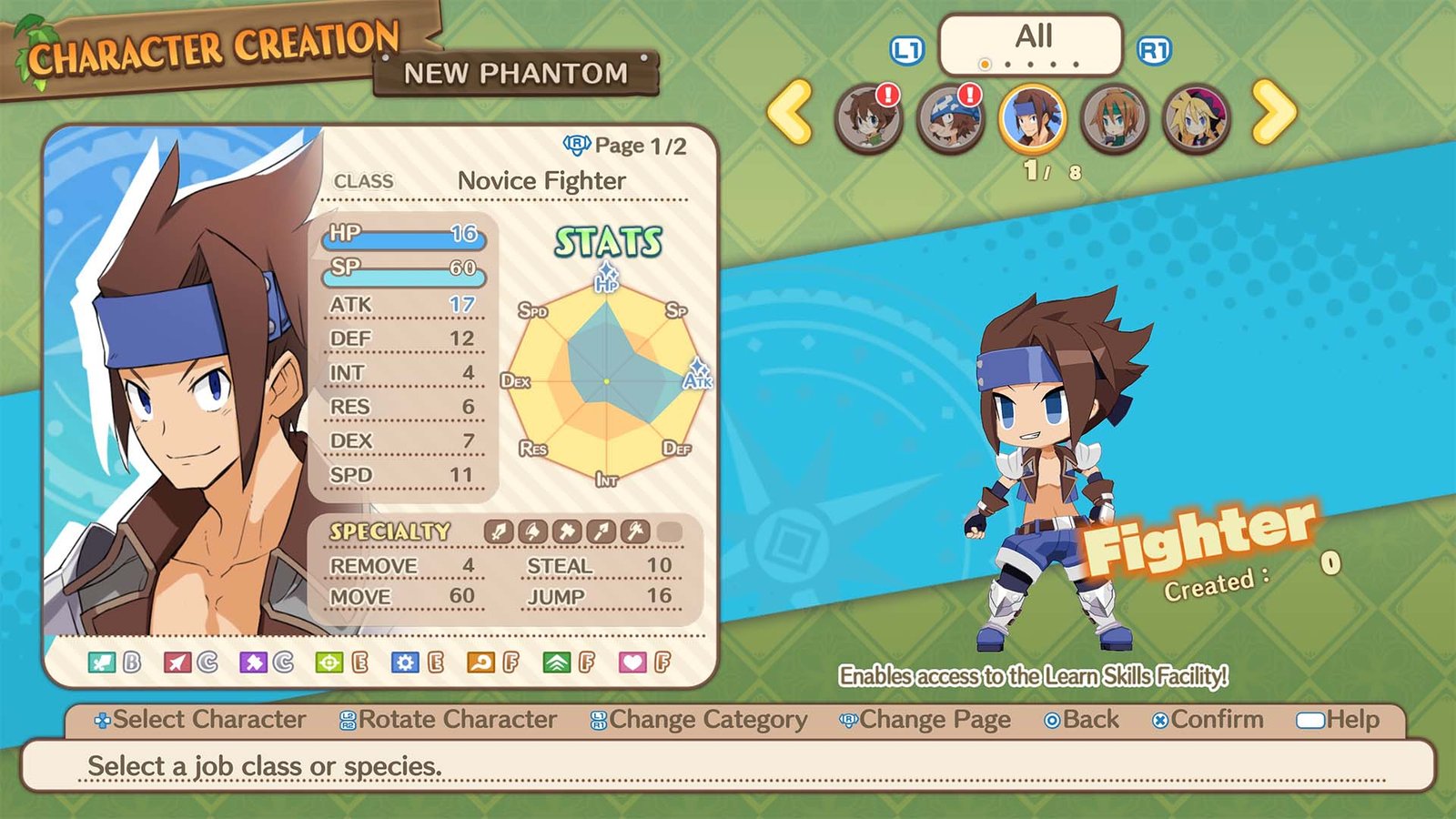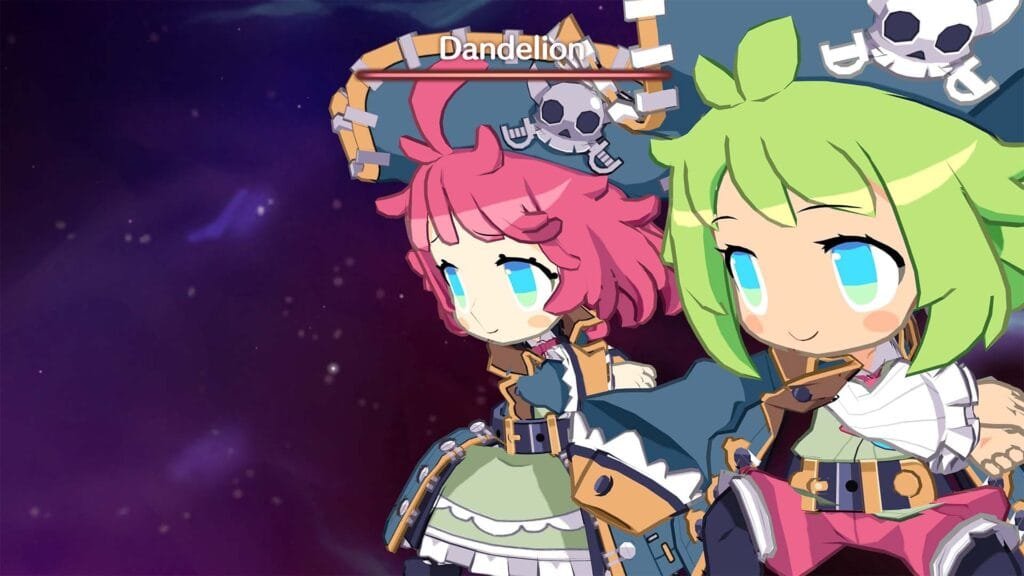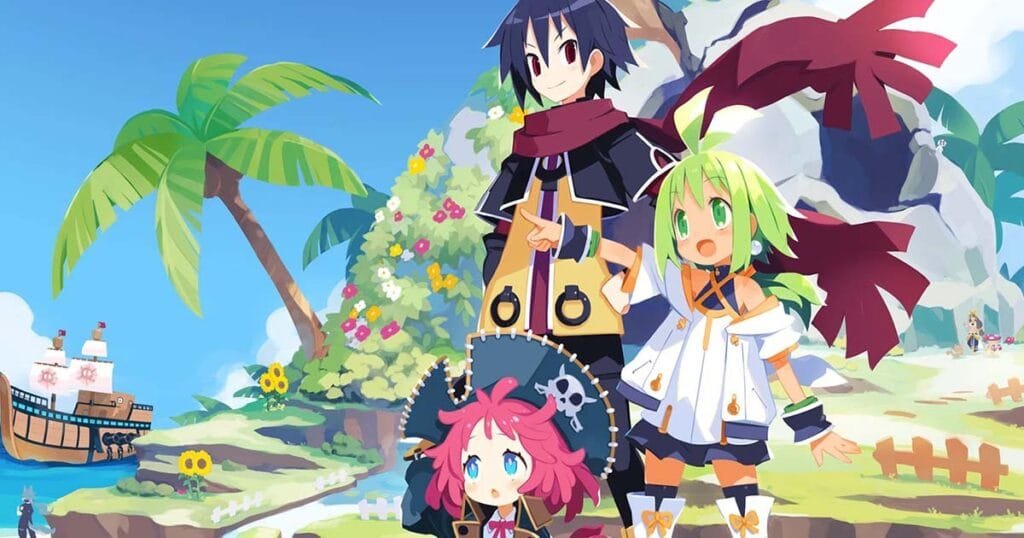Phantom Brave: The Lost Hero on PS5
When it comes to strategy roleplaying games, the Disgaea series has been a constant source of joy. So when the idea of something similar came about with NIS America and Nippon Ichi Software‘s Phantom Brave: The Lost Hero, it felt like an unmissable opportunity, even for someone who has not played the first game. Thankfully, it scratches that itch for anyone who likes strategy RPGs.
As with the first game, The Lost Hero once again takes place in the world of Ivoire, a land with all sorts of inhabitants and a large population of Phantoms. The story follows Marona, the heroine of the first game, as she sails home with her trusty partner, Ash.
Possessing the unique ability to not only see and talk to Phantoms, but also materialise them into being, events quickly unfold that separate the pair, and leave Marona with a new companion in the form of the phantom Apricot. Together, the pair set out on a new adventure to locate Ash, as well as potentially unite Apricot with her famed pirate father.
Having set things up, the game plays out in the same way that Disagea does from here on. The game has 15 chapters, each with five scenes or fights. Knowing this kept the story from dragging, as I always knew how close I was to the next section of Phantom Brave: The Lost Hero. Aside from the combat, early chapters also provided opportunities to introduce new party members, as well as more types of Phantoms.
Creating Phantoms is very similar to Disgaea, with the same classes and character models being shared between both games. There are the standard fighter, magician, thief classes and more, and while it’s pretty expected, it doesn’t negatively affect the experience, not when the original models are already excellent. The most significant difference in this adventure is that certain classes correlate to unlocking facilities on the hub island, like the shop or the crews you can send out to find new items, which gives players more reasons to experiment.

Combat is where the game shines on its own. Whereas other games are grid-based, Phantom Brave: The Lost Hero is all about free movement. Each character has a set movement radius they can operate inside of, which makes it easy to jump gaps and set up multi-target attacks. However, the radius mechanic is a little finicky and often glitches. This would often cause party members to miss ledges that were supposedly easy to navigate. Characters also had a penchant for getting completely stuck on objects.
There isn’t a base point from which to start fights, which is a good thing. Instead, the spawn point is Marona’s Confine ability, which works from a decently-sized radius around her and is used on specifically marked objects (including dropped enemy weapons) to spawn Phantoms. Every object has particular abilities and stat-affiliations that help determine who should be summoned and where. If circumstances allow, you can summon a phantom right next to an enemy, allowing you to jump straight into the action without wasting a turn getting into position.
All attacks have a certain radius, so even if you can’t get right up onto an enemy, you can typically make the attack hit. There isn’t any accuracy mechanic, either. If the attack projection engulfs the enemy enough to count, it will always hit them. Certain characters (namely Magicians) let you attack anywhere within a given radius, so you don’t have to be as strategic with their placement. Add all that together, and there are always options for players to choose from, and as you obtain stronger weapons, the corresponding battle skills improve as well, feeding into the cycle.

Regarding turns, every character, except for Marona, has a set number of turns in which they can participate in battle. Once that limit is up, they are removed and cannot be resummoned in that battle. This adds a strategic layer to the combat, forcing players to be more aware of smartly placing characters with smaller movement radius because they can quickly wear out before anything happens. That makes ranged characters much more helpful as they aren’t as stymied by less movement.
The biggest complaint is that there isn’t a way to sort the phantom list when it comes to summoning. Hub world menus allow you to sort by stats, but battles only sort by when a Phantom was added. Having to scroll just to get to the best characters every single time was tiring. The two recent Disgaea games let you set up sort lists to help in combat, so it was surprising to see that feature absent in Phantom Brave: The Lost Hero. As the list gets longer, the process will only get more tedious.
Thankfully, the game does incorporate the Juice Bar from Disgaea. It is a facility that collects a manually chosen percentage of XP (anywhere from 10% to 100%) from a fight. This then creates a pool that you can spend on Phantoms you maybe haven’t used as much to get them up to par with the rest of your party without a bunch of unnecessary grinding.

If you must do some grinding and don’t feel like running older story missions, some nice options help freshen things up. The first is in the form of requests. These are split between deliveries and fights, and it seems to be pretty even when it comes to powering up the party.
The second option for grinding is through dungeon scrolls that drop as battle rewards. When taken to the proper facility with game progression, these scrolls create a multi-floor dungeon that you can run through. The level of these appears to be random without scaling, so it can be a gamble when jumping in. The first ones created were level nine and level 41, and being nowhere near the high levels meant that it was impossible to take advantage of the dungeon. The fun part is that you give the dungeons a prefix name upon creation, and every item found inside will bear that prefix, which is just innocent fun.
While Phantom Brave: The Lost Hero echoes Disgaea down to its core, players who don’t like that series might have more reason to love this one. From the fun little story to interesting combat mechanics, it treads its own ground and revamps combat in a quite enjoyable way. It doesn’t run that long either, with my playthrough being only a bit over 40 hours, and that’s without the post-game stuff. A well-made tactical RPG can really suck you in, and Phantom Brave: The Lost Hero will do precisely that if you give it a chance, and that’s no mean feat.
Phantom Brave: The Lost Hero is available now on PlayStation 4, PlayStation 5, Nintendo Switch, and on PC in Spring 2025.
SavePoint Score
Summary
Though it shares a lot with modern Disgaea games, Phantom Brave: The Lost Hero has plenty of its own unique identity to share, creating an exceptional experience while still scratching that strategy RPG itch. Fans of the genre won’t want to miss this one.

